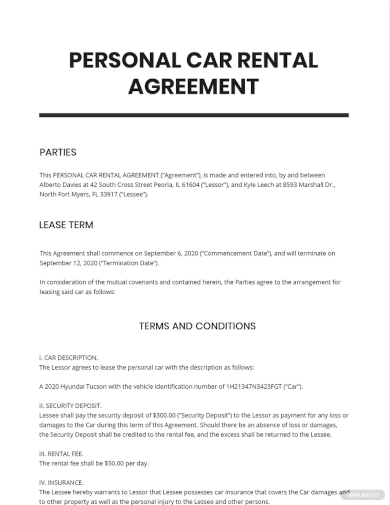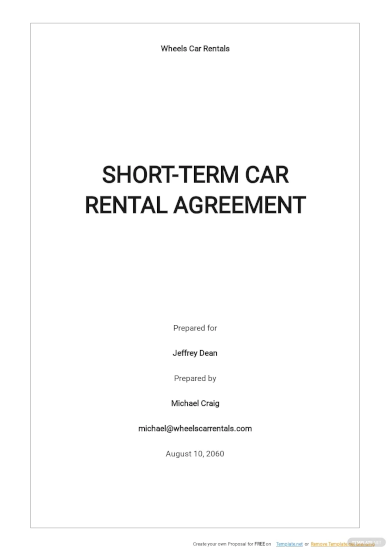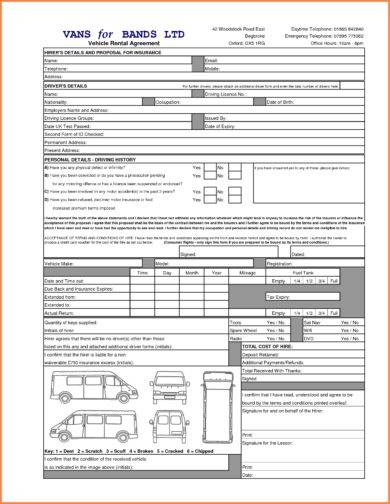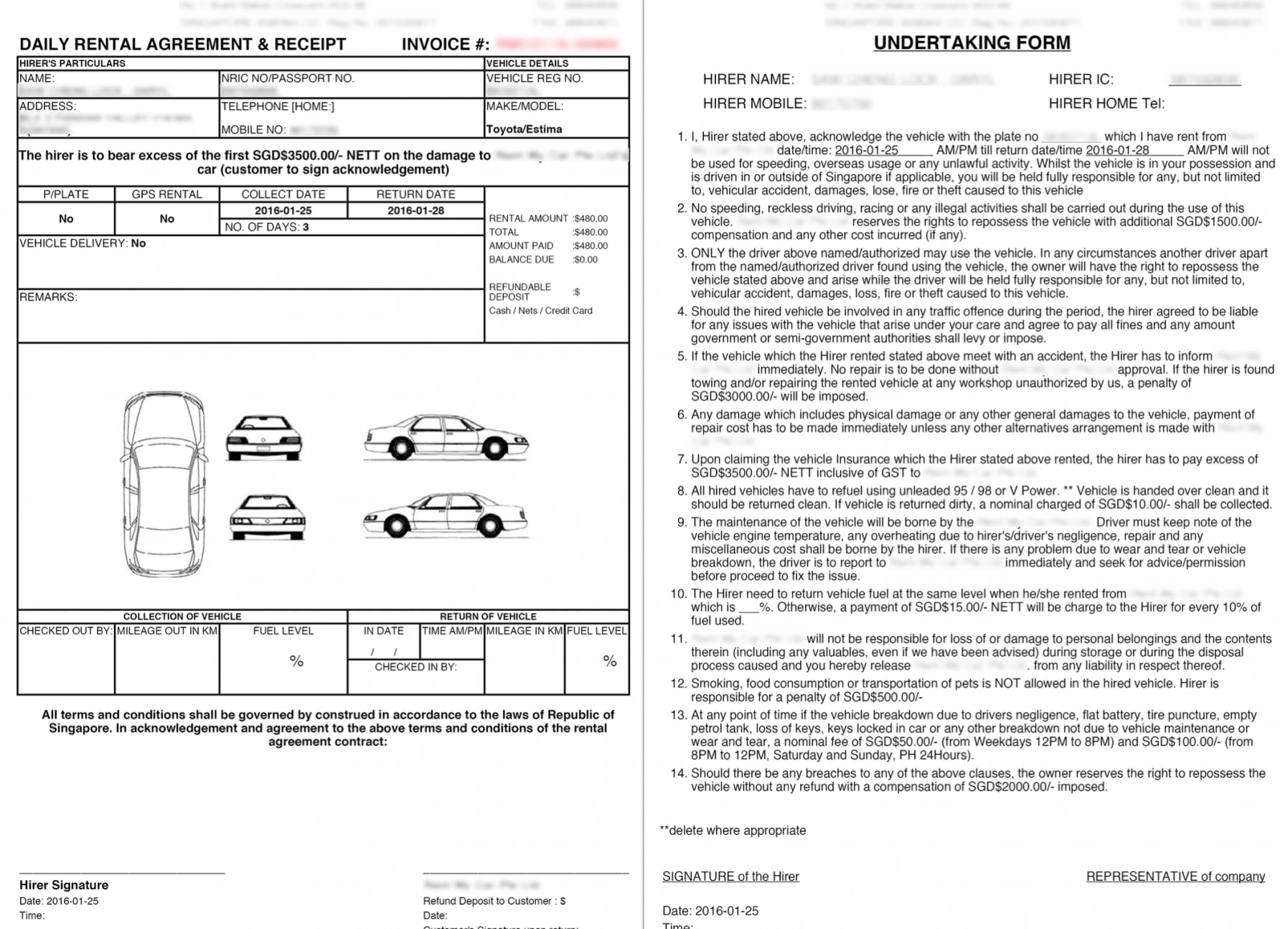

Not everyone owns a car, but everyone wants to eventually. Cars are costly, so owning one becomes a personal luxury item. That is why car rentals have become the perfect alternative for individuals who do not own any. If you are planning to venture into this business, here are some car rental agreement examples you can use as a guide to making it easy to draft your agreement in the future.




Specify rental period, fees, deposit, vehicle condition, usage restrictions, insurance requirements, and return conditions in the car rental agreement.
A car rental agreement example is a legally binding document between a car rental company and the renter who will use the vehicle. It outlines all the terms and conditions of the rental, ensuring both parties understand their rights and obligations.
Start the agreement by clearly identifying the rental company and the renter. Include full names, contact information, and addresses. This section establishes who is entering into the contract.
Detail the specifics of the rental vehicle. Include the make, model, year, color, vehicle identification number (VIN), and any existing damage. This ensures the exact vehicle lease being rented is documented.
Define the duration of the rental, specifying the start and end dates and times. Clarify whether there is flexibility for extensions and how they are handled.
Outline the rental fee, including the daily rate, and any additional charges. Detail the payment terms, including the deposit amount, when the total amount is due, and acceptable payment methods.
Specify the permitted use of the vehicle. This includes geographic limitations, whether the car can be used for commercial purposes, and who is allowed to drive the vehicle.
Explain the insurance coverage provided with the rental and any optional insurance that can be purchased. Clarify the renter’s liability in the event of damage or theft.
State the mileage policy, including the number of miles included in the rental fee and the cost per mile if the limit is exceeded.
Describe the responsibilities for motor vehicle maintenance and repairs during the rental period. Include how mechanical failures should be handled and who is responsible for routine maintenance.
Set the conditions for the return of the vehicle, including the return location, the condition the vehicle should be in, and refueling requirements.
Detail the consequences if either party breaches the agreement, such as late return fees or penalties for damage.
State the governing law which will be applied in case of disputes arising from the agreement.
Conclude the agreement with spaces for signatures from the authorized representative of the rental company and the renter, along with the date.
Attach any additional documents, such as the vehicle condition report or insurance policies, that are referenced in the agreement.
A comprehensive car rental contract protects both the rental company and the renter by clearly defining the terms of the rental, reducing the potential for misunderstandings or legal issues.



Hire car details. Rental period details. Mileage limits and fuel policy. Breakdown of rental fees, extra charges, deposits and terms of payment.
Include the full names and contact information of the rental company and the renter. This establishes who is legally bound by the terms of the agreement.
Provide a detailed description of the vehicle being rented, including make, model, year, color, VIN, and any existing damage or unique features.
Clearly state the start and end dates and times of the rental period, along with any conditions for extension and the procedure for early return or late return penalties.
Outline all costs associated with the rental, such as the daily rate, deposit amount, additional fees (like for GPS or car seats), taxes, and any other charges. Specify the payment schedule and acceptable payment methods.
Detail the mileage allowance and the fees for exceeding the specified mileage limit. Include how mileage is tracked and calculated.
Specify any restrictions on how and where the vehicle can be driven, including geographic limitations and prohibitions on off-road use or illegal activities.
Explain the insurance coverage that comes with the vehicle, any optional insurance available for purchase, and the renter’s liability for damages, including deductibles.
Describe the expected condition of the vehicle at the time of rental and upon return, including cleanliness and fuel level. Clarify who is responsible for maintenance and mechanical issues during the rental period.
Provide instructions for the renter to follow in the event of an accident or theft, including emergency contact numbers and required documentation.
Explain the consequences for breach of contract by either party, such as fees for late returns or penalties for damage beyond normal wear and tear.



Here is an Examples of Car Rental Agreement:
These examples are for illustrative purposes to show how a car rental agreement might be structured. Each rental company will have its own specific terms and conditions based on their policies and legal requirements.






Car rental agreements and car lease agreements are both contracts that pertain to the use of a vehicle, but they serve different purposes and have distinct terms and conditions. Here’s a comparative table that highlights the main differences:
| Feature | Car Rental Agreement | Car Lease Agreement |
|---|---|---|
| Duration | Short-term (ranging from a few hours to several weeks). | Long-term (usually several months to years). |
| Purpose | Intended for temporary use, often for travel or short-term needs. | Intended as a substitute for purchasing a car, offering longer-term use. |
| Payment Structure | Daily or weekly rates, often with the option to purchase additional insurance or services. | Monthly lease payments, which may include maintenance and service costs; sometimes requires an upfront deposit. |
| Mileage | Limited mileage with potential extra charges for exceeding the limit. | Typically comes with a mileage limit for the lease term, with penalties for going over. |
| Maintenance and Repairs | Responsibility of the rental company, though the renter must not abuse the car. | Lessee may be responsible for maintenance and repairs according to the lease terms. |
| Ownership Option | No option to purchase the vehicle at the end of the rental period. | Often includes the option to buy the car at the end of the lease term with a ‘residual value’ purchase price. |
| Customization | No customization permitted. | Minimal customization allowed, and the vehicle must be returned in its original condition, subject to wear and tear. |
| Termination | Can be returned at any point with potential early return fees. | Early termination can result in significant penalties; usually more rigid. |
| Usage | Mostly used by individuals during travel or when their own vehicle is unavailable. | Used by individuals who prefer to change cars every few years or as a long-term but flexible option to vehicle ownership. |
| Insurance | Rental companies offer temporary insurance coverage. | Lessees must typically obtain their own insurance according to lease agreement terms. |
In general, a car rental is a short-term arrangement without the possibility of ownership, while a car lease is a longer commitment that can potentially lead to owning the car. Rental agreements are more flexible, whereas lease agreements come with a commitment that is financially more binding over a longer period.